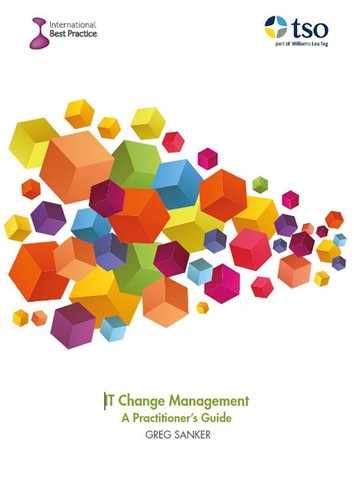Introduction
“Only the most intelligent and the most stupid do not change. Confucius”
Change is everywhere. Everything is in a constant state of flux.
Businesses used to have one choice when it came to technology – their internal IT staff. But with mobile computing and cloud services infrastructure on demand, we live in a new era where anyone anywhere in the world with a bright idea can make it available to the global marketplace in a few hours. This ‘consumerization’ of IT services puts enterprise-class IT services at the fingertips of everyone in your company.
All modern enterprises depend on the digital infrastructure for their very lifeblood. The game is no longer simple decision support; entire businesses depend on unprecedented strategic advantages afforded to those who master big data and can move with agility to capitalize on the narrow window of opportunity earned by their advantage.
Likewise, both government and public IT sectors face similar pressures to adapt. Many agencies are still operating with a 1950s mindset, automated by technology in the late 1970s. Meanwhile, a generation of ‘digital natives’ expect public agencies to provide services and access to information in the same ways they’ve come to expect from private businesses. They don’t understand why it’s so difficult, and have no interest in the complexities of legacy IT systems. As organizations struggle to meet demands for modern services with antiquated systems, the news is full of IT project failures and alarming security breaches.
IT systems represent an increasingly complex hybrid of multivendor applications, services and infrastructure. IT organizations face cloud and other forms of ‘as a service’ delivery models that simply didn’t exist when even recently hired staff were in college. The world has never been more connected, enabling instantaneous global collaboration with unprecedented levels of complexity, operational challenges and risks. Hardly a day passes without the discovery of a new security breach, a vulnerability exposed or personal information compromised.
IT organizations are facing increased regulatory and compliance pressures as governments and industry organizations address emerging risks and challenges. The complexity and rate of change can be overwhelming, and there’s a temptation to want things to stay the way they are because we understand the current state and are comfortable with it. But such ‘stability’ is an illusion. Stability isn’t the absence of change but rather the deliberate application of the right changes that restore balance and maintain stability.
Wise is the IT organization with a strong and effective change management capability that meets the needs of its customers.
Example
A US government agency commissioned a major application development effort. The contractor gathered requirements and managed the project through to completion. In line with the agency’s usual practice, when the development was complete, the change was brought to the change advisory board (CAB) for sign-off before being released into production.
Much to the surprise of the project team, the change was denied. Highly offended, they demanded to know what right the change manager had to block such an important change. Regretfully, the change manager had to tell the project team they had developed the new application for a platform that the agency didn’t have in the production environment.
All change involves risk: risk of breaking something, losing something or not achieving the desired results. IT change management is the art and science of effective and efficient implementation of beneficial changes to IT services at the speed business requires, while minimizing negative impact and managing risk.
Many IT organizations have adopted some form of IT service management (ITSM) best-practice framework, at least to a degree. ITSM training continues to be very popular, with numerous qualification and certification schemas. These are excellent sources of information, and I highly recommend this type of training. However, if it’s a change management process you’re after, you can have that in a week. On the other hand, if you want an effective change management capability, well, that will take a bit more time.
An effective change management capability requires more than just training in best practices and process frameworks, because it is far more than merely implementing a process for managing change. It requires a great deal of knowledge and understanding of the particular organization and its unique challenges. The change management practitioner must understand the organization’s culture, challenges and goals.
And it goes even deeper than that. Change management cannot be just the same thing only faster; it must be engineered from the ground up to meet the current and ever-changing needs of business. Best practices, including change management, must be adopted and adapted.
The challenges facing the change management practitioner have never been greater, yet there’s never been a better time to be a change manager. Successful organizations require highly effective IT change management. So where do we begin?
We start right here – with the end in mind. In this publication you’ll find a very straightforward multiphased approach to make change management work in your organization. It is structured in logical steps, or phases, that focus on the success of each individual step while maximizing the likelihood of building a mature change management capability.
What outcomes do our customers need that IT change management can help facilitate? How will our change management capability enable the business to be more successful? These are the kinds of question that should be at the forefront of your mind as a change management practitioner, and this publication willl help you work through the answers.
